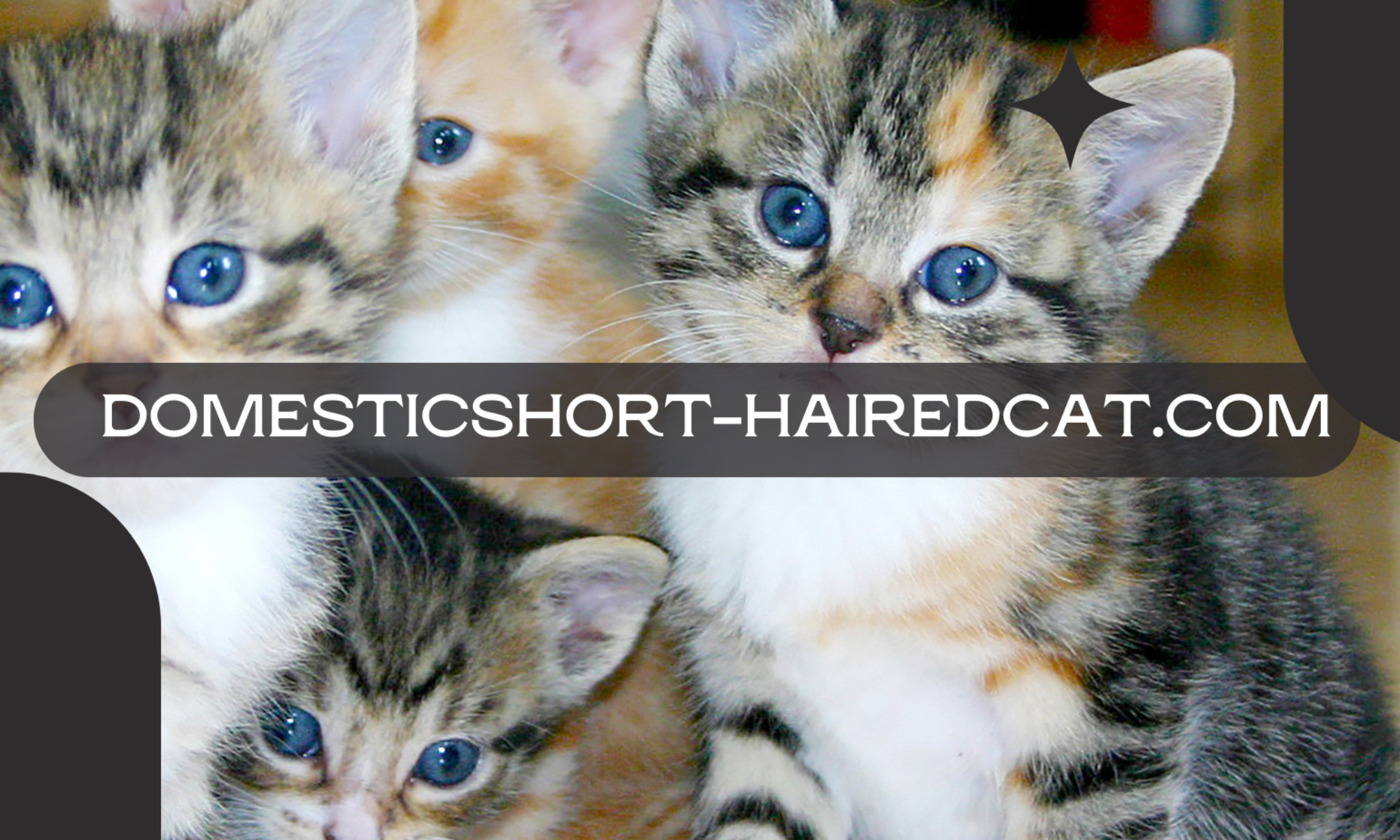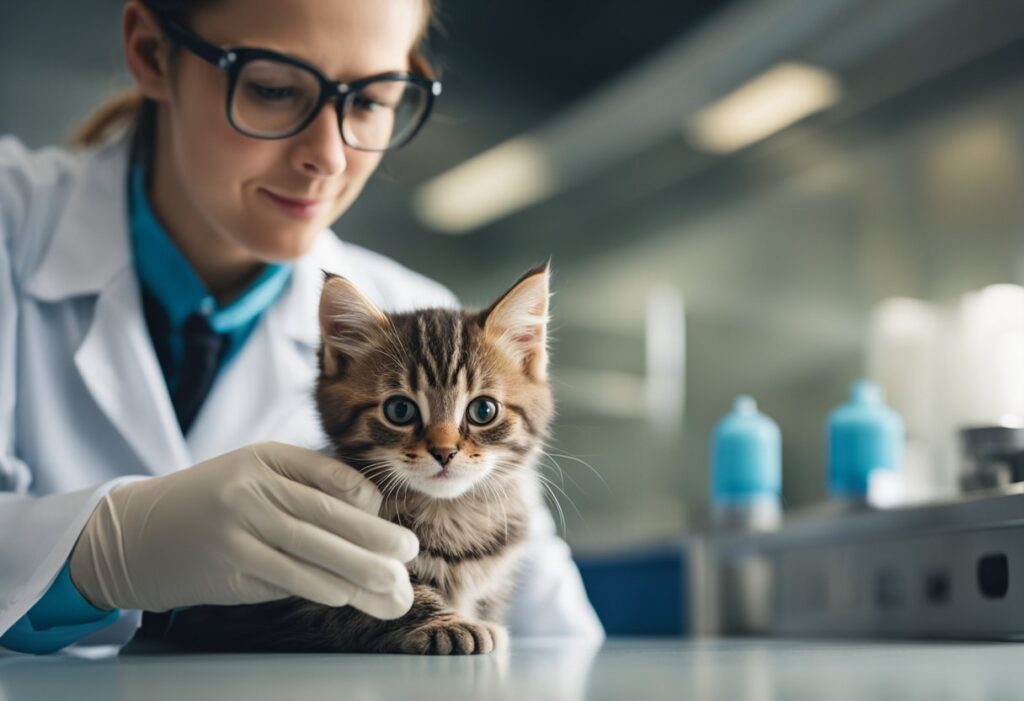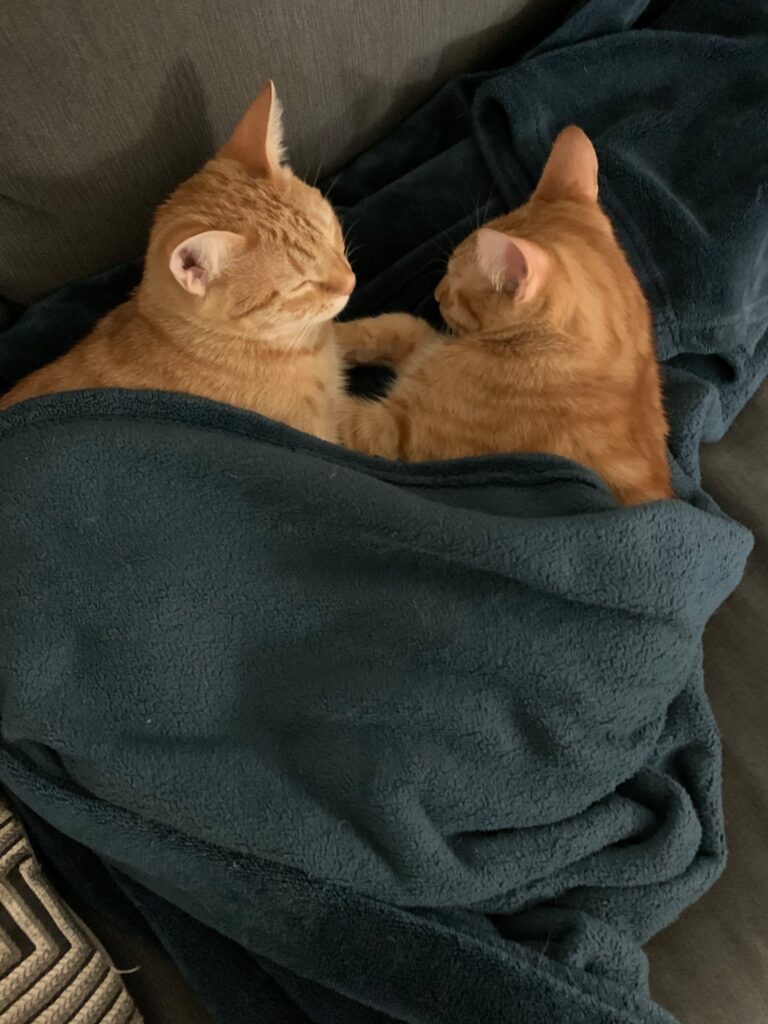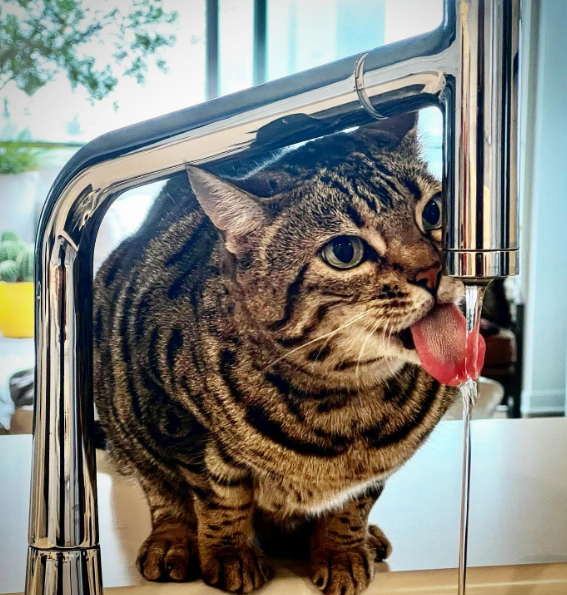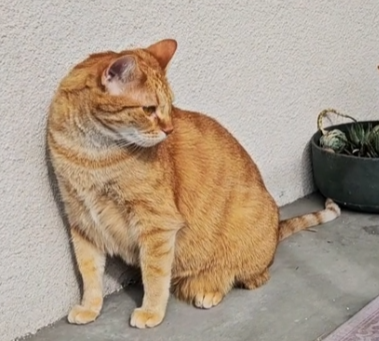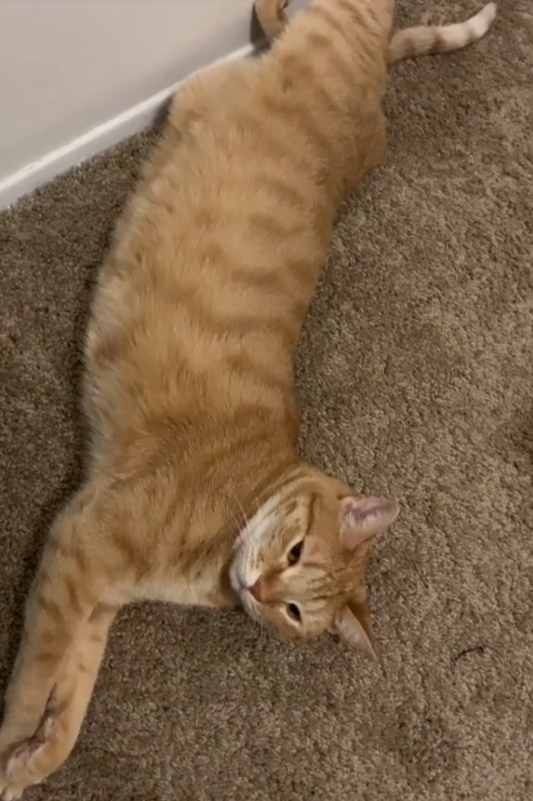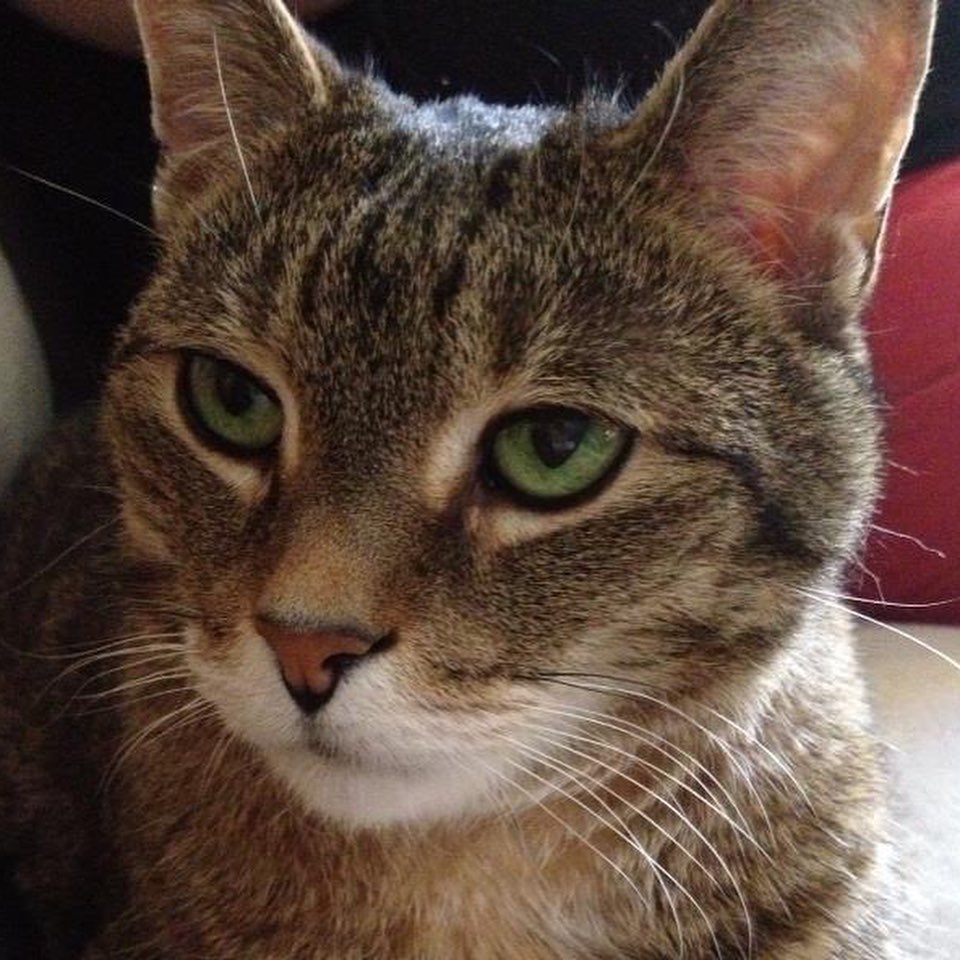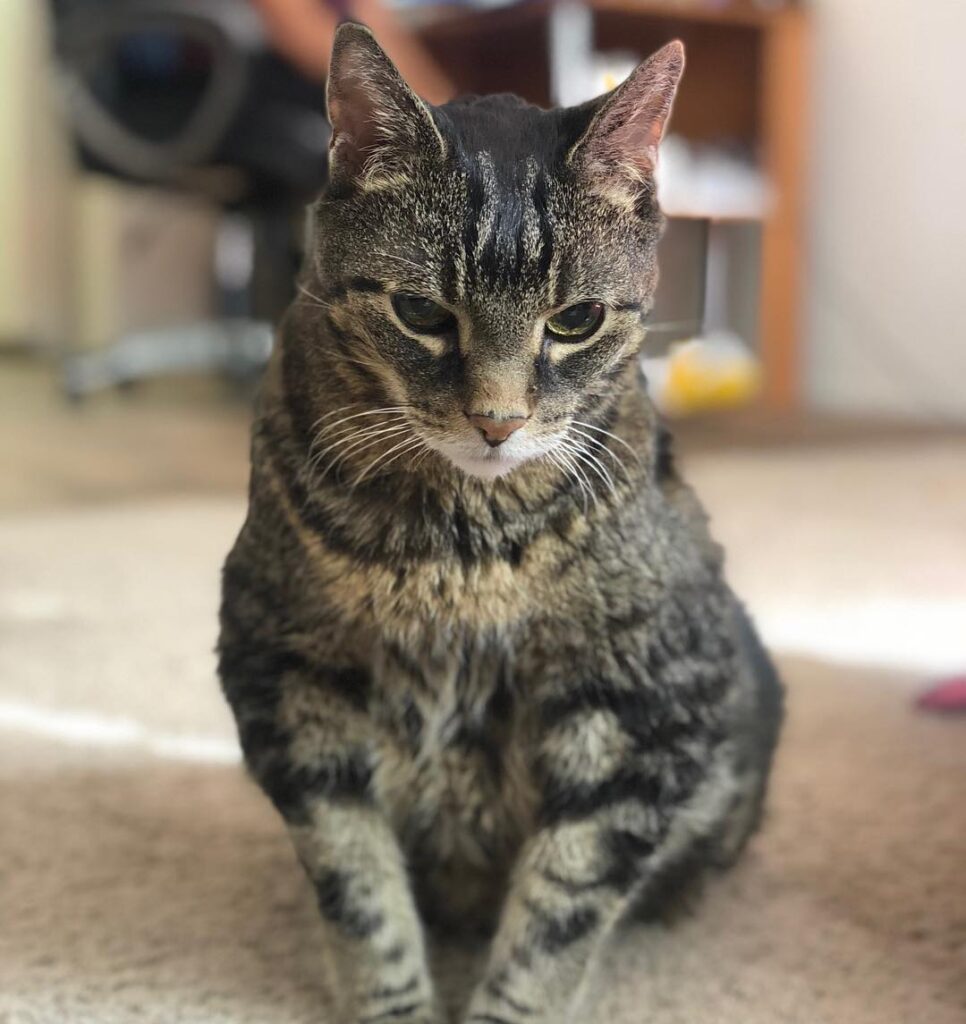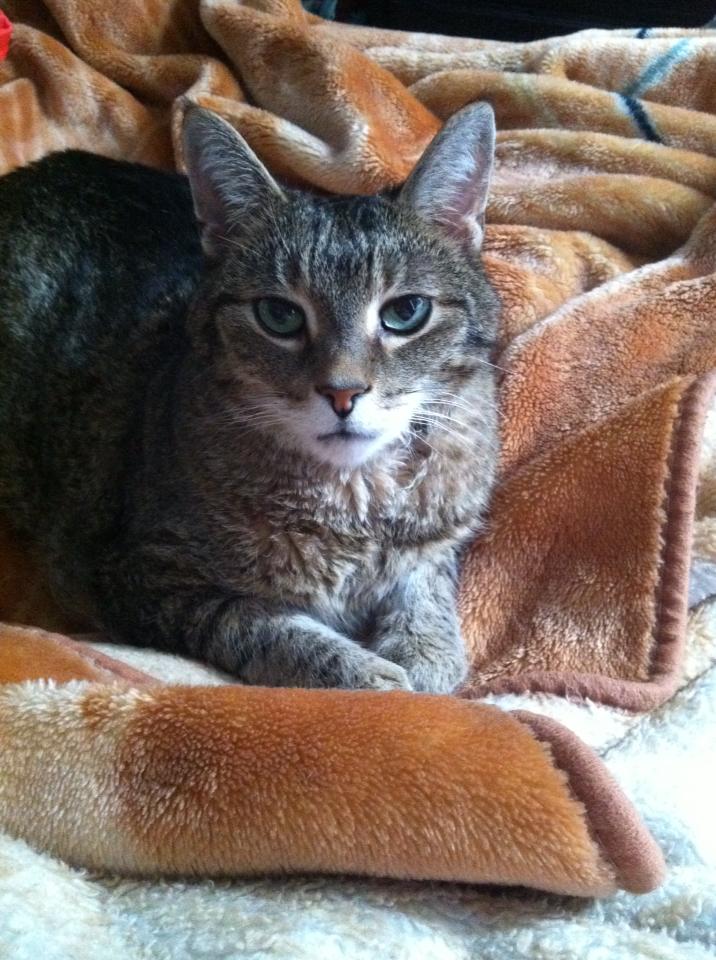You wanna talk about cool cats? Well, Bengal cats and Egyptian Maus are two distinct breeds with unique characteristics and some of the coolest looking domestic cats you’ll come across!
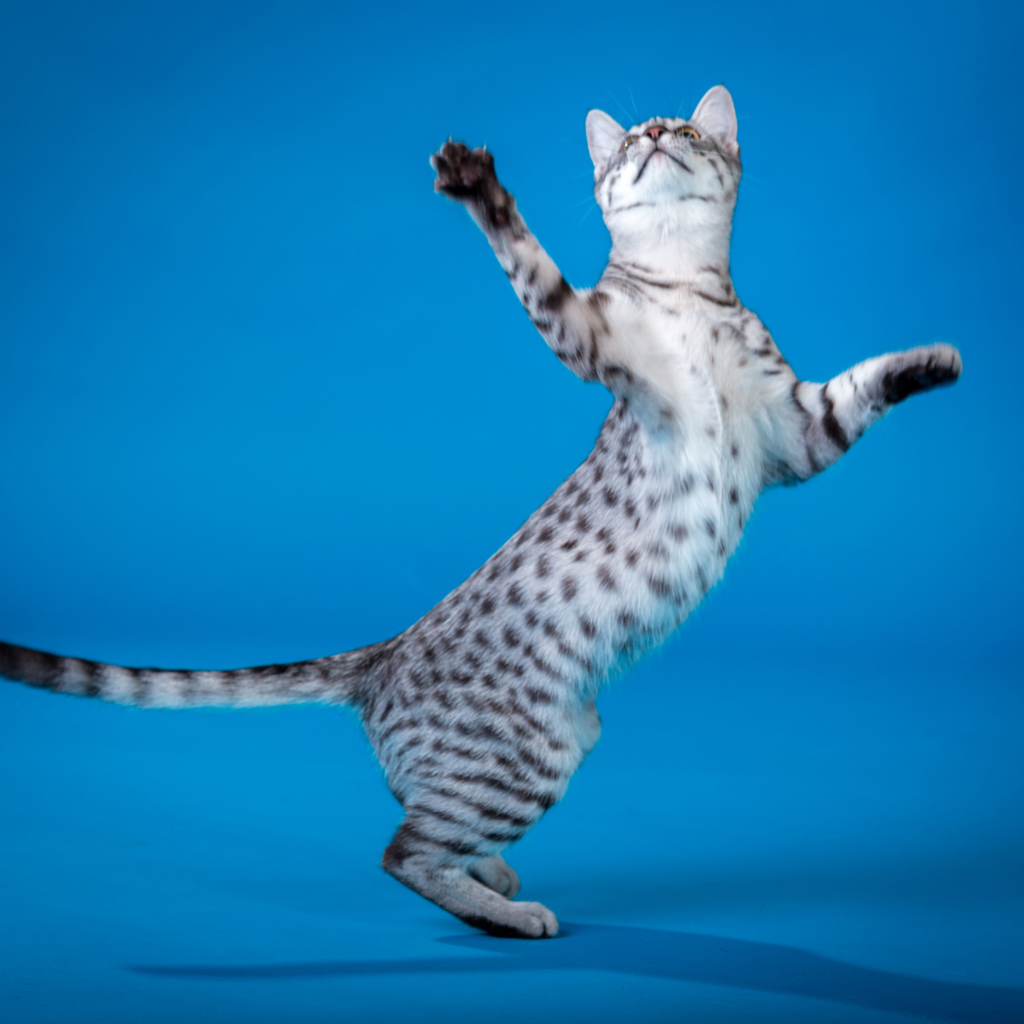
Bengal cats are known for their leopard-like appearance, while Egyptian Maus have a naturally spotted coat.
While someone new to these two breeds will confuse them, the Maus and Bengals have different personalities, sizes, and temperaments, which makes them unique in their own way.
Bengal cats are typically larger than Egyptian Maus, but this varies a lot from cat to cat. They’re also more social and interactive, while Egyptian Maus tend to be more reserved.
Both breeds are active and love to play, but Bengal cats are known to be more mischievous and playful than Egyptian Maus.
If you are considering getting a Bengal cat or an Egyptian Mau, you’ll definitely want to understand the differences between these breeds.
This article will compare and contrast Bengal cats and Egyptian Maus, providing insights into their characteristics, personality, and temperament. I’ll explain it all below:
Origins of Bengal Cats
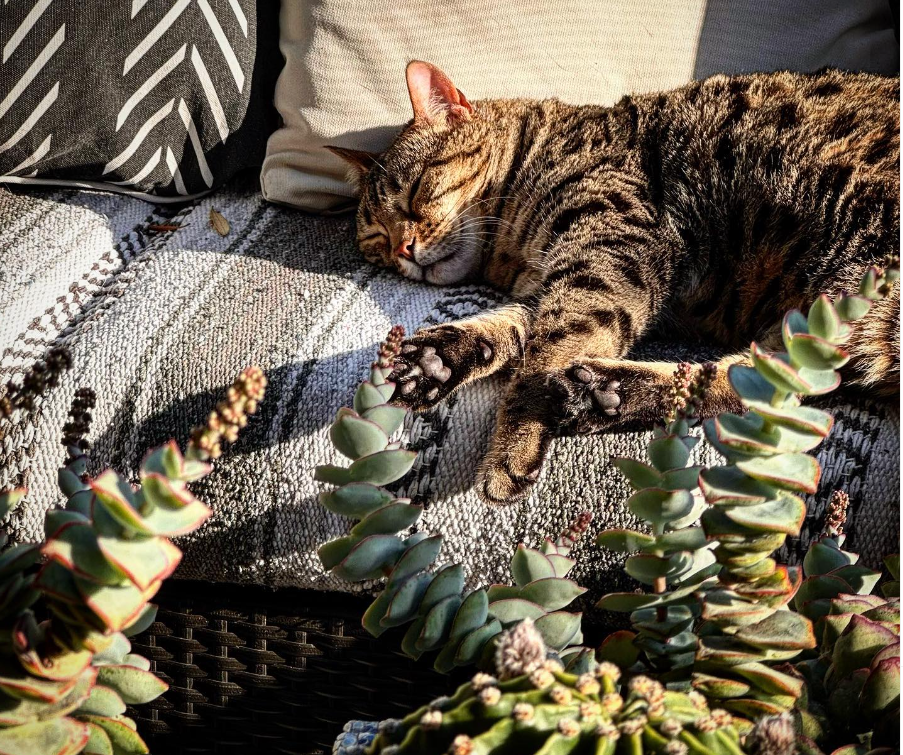
The Bengal cat is a relatively new breed that originated in the United States in the 1960s.
The breed was developed by Jean Mill, who crossbred domestic cats with the Asian leopard cat (Prionailurus bengalensis), a small wild feline found in Asia.
The breed’s name, Bengal, is derived from the Asian leopard cat’s scientific name.
The goal of the breeding program was to create a domestic cat with the exotic look of a wildcat, but with a friendly and sociable temperament.
The breed quickly became popular due to its striking coat patterns and playful personality.
Origins of Egyptian Mau Cats
The Egyptian Mau is an ancient breed that is believed to have originated in ancient Egypt.
These cats were highly prized by the ancient Egyptians and were often depicted in their artwork.
The breed is known for its distinctive spotted coat pattern and its loyalty to its owners.
The Egyptian Mau was brought to the United States in the 1950s by a Russian princess named Nathalie Troubetskoy.
She brought three of the cats with her when she immigrated to the United States. The breed quickly gained popularity in the United States due to its unique appearance and friendly personality.
Today, both the Bengal cat and the Egyptian Mau are popular breeds of domesticated cats known for their unique appearance and playful personalities.
Physical Characteristics
There are definite distinctions in both of these felines. Let’s delve in:
Distinctive Appearance of the Bengals
Bengal cats are known for their distinctive appearance, which resembles that of a leopard.
They are medium to large in size, with a muscular and athletic build.
Their coat is soft, short, and dense, and it comes in a variety of colors and patterns, including brown, silver, and snow.
The most common pattern is the spotted pattern, which can range from small spots to large rosettes.
The Bengal cat’s head is wedge-shaped, with small ears that are set low on the head.
Their eyes are large and almond-shaped, and they come in a variety of colors, including green, gold, and blue.
The Bengal cat’s tail is long and thick, with a black tip.
Striking Appearance of the Egyptian Maus
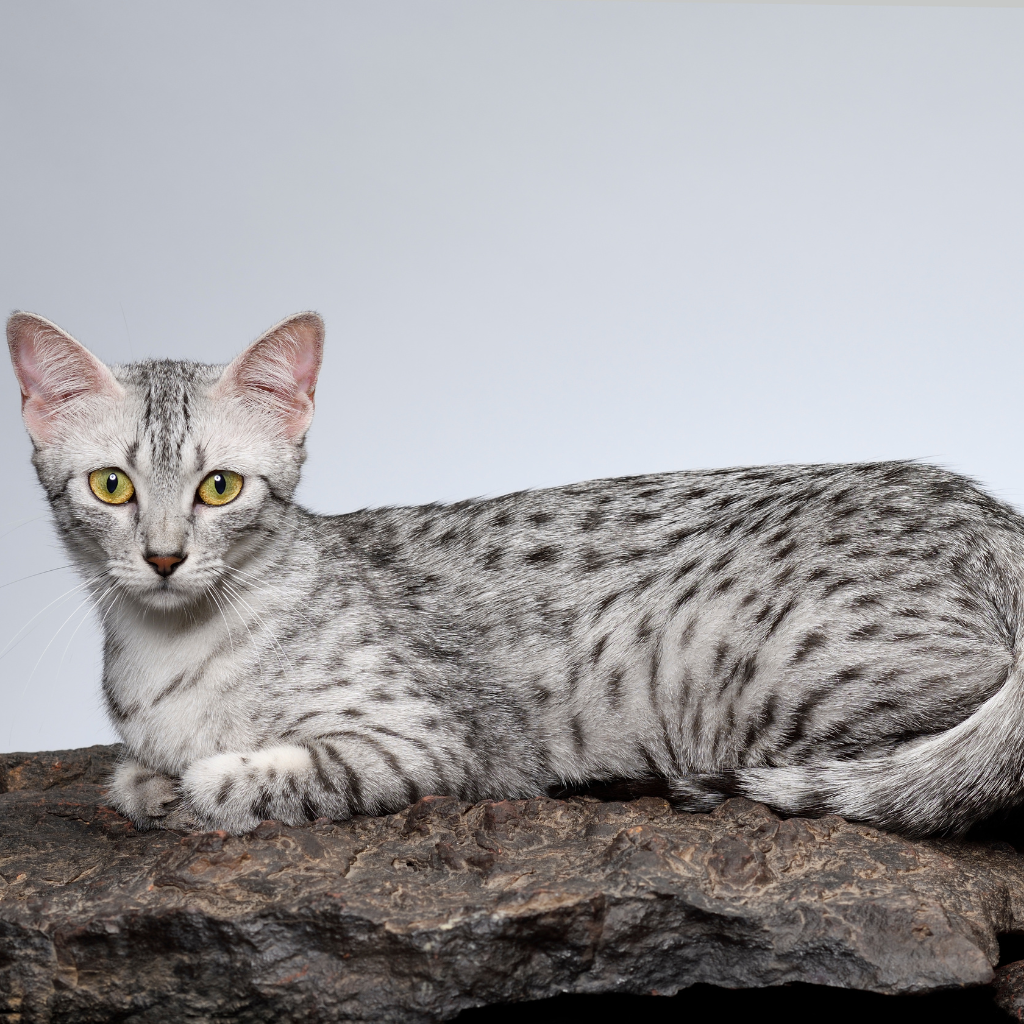
The Egyptian Mau is a medium-sized cat that is known for its unique coat pattern, which resembles that of a wild cat.
They have a muscular and athletic build, with a triangular head and large, almond-shaped eyes.
Their coat is short, silky, and glossy, and it comes in three colors: silver, bronze, and smoke.
The Egyptian Mau’s coat pattern is characterized by spots, which can range from small to large, and are usually located on the head, neck, and legs.
They also have distinctive markings around their eyes, which resemble mascara. The Egyptian Mau’s tail is long and slender, with a black tip.
In terms of size, the Bengal cat is generally larger than the Egyptian Mau. However, both breeds are known for their agility and athleticism, which is a trait they share with their wild cat ancestors.
While the Bengal cat’s coat pattern is more reminiscent of a leopard, the Egyptian Mau’s coat pattern is more reminiscent of a cheetah.
Temperament and Behavior of Both Breeds
Both cats have awesome temperaments with subtle nuances:
Bengal Cat Temperament

Bengal cats are known for their active and independent nature.
They are an energetic breed that loves to play and explore their surroundings.
They are also very affectionate and love to be around their owners.
Bengal cats have a reputation for being mischievous and can be quite vocal when they want attention.
They are highly intelligent and can be trained to do tricks and respond to commands.
Bengal cats are revered for their exotic appearance and are often compared to wild cats. However, they are domesticated and make great pets for families with children.
They are also known to get along well with other pets, including dogs.
Egyptian Mau Behavior
Egyptian Maus are a mysterious and ancient breed that are well-known for their spotted coat.
They have a reputation for being highly energetic and playful, and they love to run and climb.
They are also very independent and can be quite stubborn at times.
Egyptian Maus are talkative cats and love to communicate with their owners. They are also very loyal and affectionate, and they enjoy spending time with their owners.
Like most other breeds, they are excellent climbers and love to sit on high perches and survey their surroundings.
Breed Characteristics
These breeds have been developed over time through selective breeding and have become popular pets for many cat lovers. In this section, I’ll discuss the breed characteristics of Bengal cats and Egyptian Maus.
Bengal Cat Breed Features
The Bengal cat breed is recognized by The International Cat Association (TICA) as a breed standard.
They are a rare breed, and they are known for their distinctive markings, which resemble those of a leopard.
Bengals are highly energetic and require a lot of exercise. They are intelligent and can be trained to do tricks.
Bengals are also known to be healthy cats, with a lifespan of 12-16 years.
Egyptian Mau Breed Traits
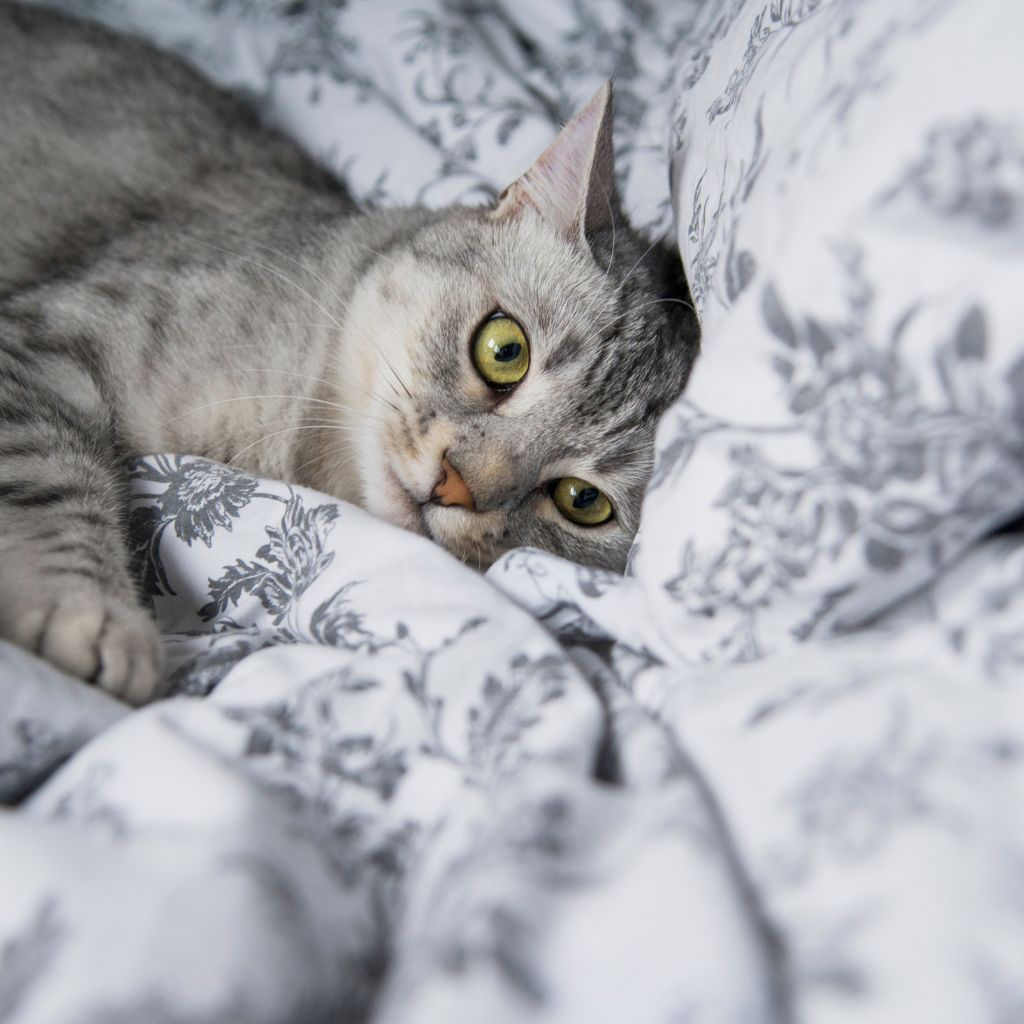
Egyptian Maus are one of the oldest breeds of domestic cats.
They are a rare breed that is recognized by TICA as a breed standard as well.
They are also known for their large, almond-shaped eyes, which are green in color.
Egyptian Maus are highly intelligent and are known for their playful and affectionate nature.
They are also known for their athleticism and are often compared to Savannah cats and Ocicats.
Egyptian Maus are a healthy breed, with a lifespan of 12-16 years.
Health Care of Both Breeds
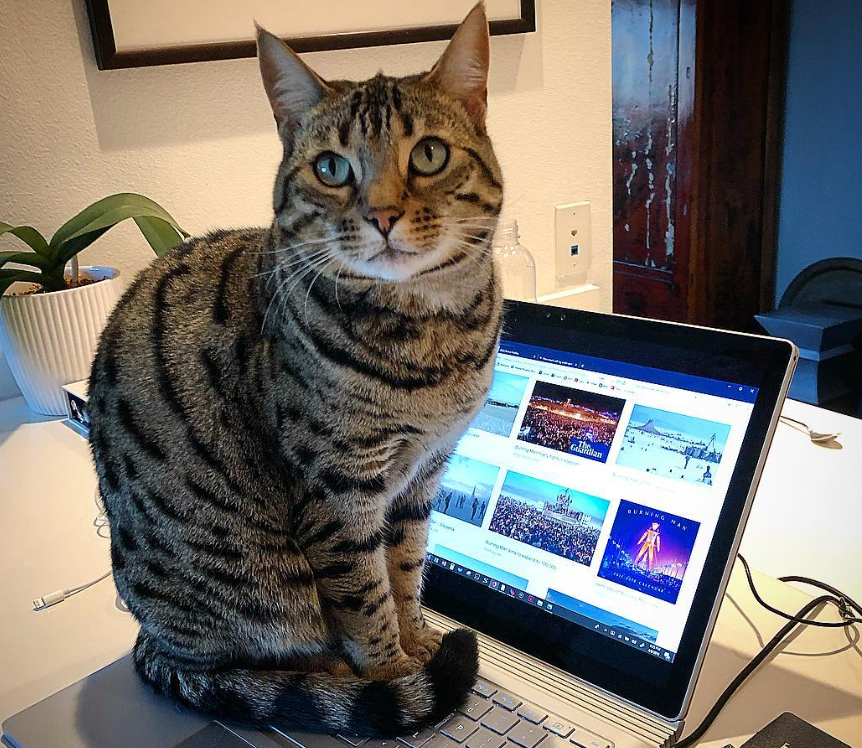
Bengal cats are generally healthy and have a lifespan of 12-16 years.
However, like all pets, they require regular visits to the veterinarian for check-ups and vaccinations.
Bengal cats may be prone to certain health issues such as:
- Hypertrophic Cardiomyopathy (HCM): a heart disease that causes thickening of the heart muscles. Bengal cats should be screened for this condition regularly.
- Patellar Luxation: a condition where the kneecap dislocates from its normal position. This can cause lameness and arthritis.
- Progressive Retinal Atrophy (PRA): a genetic condition that causes degeneration of the retina. Bengal cats should be tested for this condition before breeding.
To keep Bengal cats healthy, owners should provide them with a balanced diet that meets their nutritional needs.
Bengal cats are obligate carnivores and require a diet high in protein.
Owners should also ensure that their cats have access to clean water at all times.
Now, let’s consider the Egyptian Maus. Egyptian Maus have a lifespan of 13-16 years but like all pets, they require regular visits to the veterinarian for check-ups and vaccinations.
Egyptian Maus may be prone to certain health issues such as:
- Hypertrophic Cardiomyopathy (HCM): a heart disease that causes thickening of the heart muscles. Egyptian Maus should be screened for this condition regularly.
- Amyloidosis: a condition where abnormal proteins are deposited in the body’s organs. Egyptian Maus may be predisposed to this condition.
- Dental Issues: Egyptian Maus may be prone to dental issues such as gingivitis and periodontal disease.
To keep Egyptian Maus healthy, owners should provide them with a balanced diet that meets their nutritional needs.
Egyptian Maus are obligate carnivores and require a diet high in protein.
Owners should also ensure that their cats have access to clean water at all times. Regular dental check-ups and cleanings are also important to maintain oral health.
How do I differentiate between a Bengal cat and an Egyptian Mau?

Bengal cats and Egyptian Maus have some similarities in appearance, but there are also some key differences.
Bengal cats have a distinctive spotted or marbled coat that is often described as “wild-looking” while the Egyptian Maus have a more refined appearance, with a sleek, muscular body, a distinctive “M” marking on their forehead, and their coat have a more pronounced “ticked” coat pattern.
What factors contribute to the difference in price between Bengal cats and Egyptian Maus?
The price of a Bengal cat or an Egyptian Mau can vary widely depending on a number of factors.
Usually, Bengal cats are more expensive than Egyptian Maus due to their rarity and unique appearance.
Bengal cats are a sought after wild hybrid breed which makes them more difficult to breed and therefore more expensive.
Additionally, Bengal cats are often bred for specific coat patterns or colors, which can also affect their price.
What are the size comparisons between Bengal cats and Egyptian Maus?
Bengal cats are usually larger than Egyptian Maus.
Adult Bengals can weigh anywhere from 8 to 15 pounds, while Egyptian Maus typically weigh between 6 and 14 pounds.
Bengal cats are also taller than Egyptian Maus, with an average height of 8-10 inches compared to the Mau’s average height of 8-10 inches.
What are some disadvantages of owning an Egyptian Mau cat?
While Egyptian Maus are generally healthy and low-maintenance cats, there are some potential drawbacks to owning one.
For one, Egyptian Maus are known to be highly active and energetic, which means they may not be the best choice for someone who is looking for a more laid-back pet.
Additionally, Egyptian Maus can be quite vocal and may meow loudly and frequently, which can be bothersome to some owners.
Finally, Egyptian Maus can be somewhat territorial and may not get along well with other cats or pets.
If you love learning about cool cat breeds, you’ll want to check out our Maine Coons vs Bengal Felines article here.
